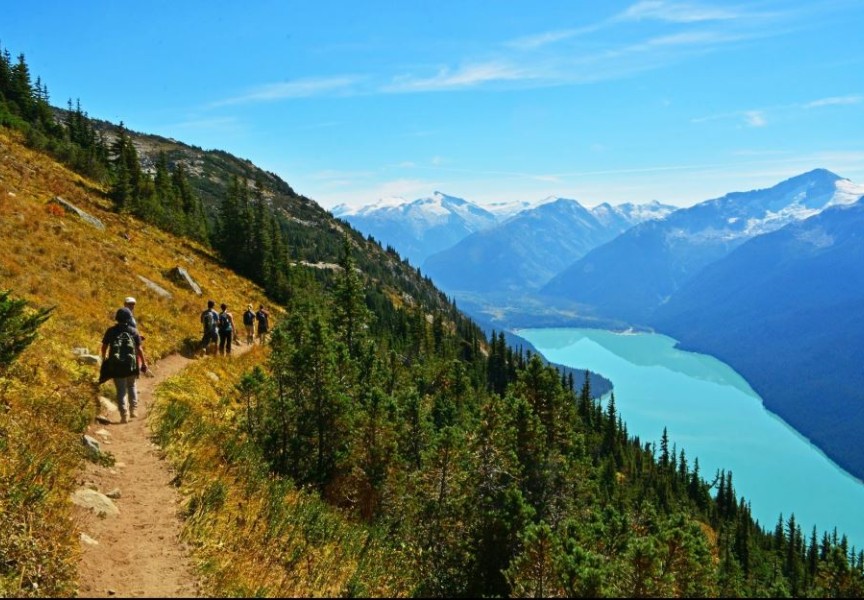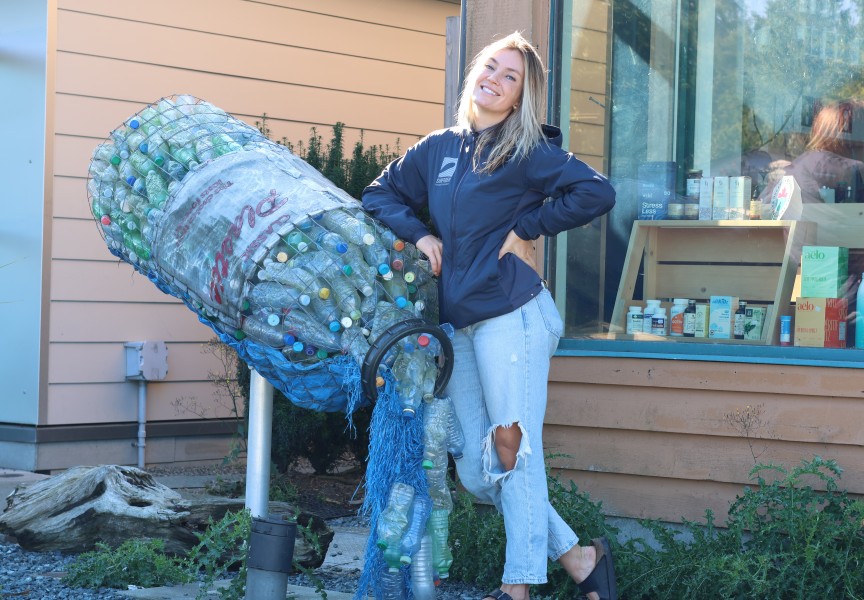Vancouver Island is known for its predatory wildlife, such as black bears, coastal wolves and cougars, that roam the rugged coastline. Amidst the coast many towns and villages sit in areas with high populations of predatory wildlife, making interactions with humans often inevitable, unless effective coexistence management is in place.
Dennis Hetu is the program administrator for lands, resources and public works for Toquaht Nation, working and living in the First Nation’s village of Macoach. His job entails educating on and implementing strategies to avoid human-wildlife interactions within his community.
Macoah is located between two highly productive salmon-bearing streams, explains Hetu, and during the spawning season there is a higher risk of bears traveling through the village. During this time, Macoah’s hazing program is on guard.
With the hazing program, when a bear is reported, two to three individuals will drive to the site and check out the area, explains Hetu.
“If [the bear is] still there, we actually go out of our way to scare them off,” said Hetu. “We make them feel very unwelcome in our community, and it's not because we don't like them, we love them…. we want them to remain alive.”
Hetu encourages community members to report bear and wildlife sightings, and to not stop, feed, or take photos.
“Every tiny interaction that [a person has] with this animal changes the way that [the animal] feels about humans,” explained Hetu. “When you stop and take a picture, you may think you're being completely harmless to that animal… just the fact that nothing happened between you and that bear makes that bear believe that it's safe. And we're not safe, we're definitely not safe for bears.”
Other efforts, such as proper garbage disposal and recycling storage, helps with effective coexistence.
Since the implementation of a proper garbage disposal and recycling storage, human-wildlife interactions in the community have decreased from 20 to 30 per year to zero in the last three years, said Hetu.
When predatory animals like bears enter the village, it's usually because they are following their nose, he said.
“If you take away a food source of theirs, there’s no reason for them to stick around, they will cruise through,” said Hetu. “If there's no reason for them to stay then they'll move on.”
Hetu said that habitat coexistence occurs when animals no longer have a reason to remain in and around areas populated with humans; they are then forced to return to their habitat.
“If we can restore it to the point where they can actually survive and thrive in their own habitat, which we are taking away strip by strip, it gives them a better chance of not only surviving in the wild, but not having to come into town and beg for scraps,” said Hetu.
He notes that salmon restoration projects in fish-bearing streams and bear dens models in areas they frequent contributes to habitat restoration.
Bob Hansen is a retired human-wildlife coexistence specialist with Parks Canada and a seasonal community coordinator with WildSafe BC. He notes that he is not speaking on behalf of either organization.
Hansen explains that historically, and up until the late ‘60s and early ‘70s in Canada, the strategy to manage human-wildlife conflict was focused on reducing and controlling the number of animals.
“In the decades since, that thinking has really evolved to the point now where we have such a greater understanding of wildlife ecology and wildlife behaviors, and the dynamics that can lead to conflict,” said Hansen. “Now the emphasis is on the human side of the equation, you know, what can we do in terms of preventing conflict in the first place is the biggest emphasis.”
Hansen said programs, such as WildSafe BC, focus on prevention, education, and outreach, which then avoids human-wildlife conflict.
“What are the root…sources of the conflict in the first place? And almost always there's something we can do on the human side to prevent that,” said Hansen.
Hansen said that some solutions include urban planning, management of attractants and understanding wildlife.
“There's lots of things that we can do on the human side, and where that happens, you see real reductions in conflicts,” said Hansen.
“Keeping wildlife wild is really a shared responsibility, and everybody has a role to play in that.” said Todd Windle, coordinator of Parks Canada’s Wild about Wolves program. “Everything is interconnected, and to have a healthy ecosystem for all of us we need to have all those parts of the ecosystem.”
“Changing our behaviors [and] the way we think is the answer,” added Hetu. “And of course, engaging with the youth. The youth are the future, and if anybody's going to pass on the message positively, it's going to be our youth.”








